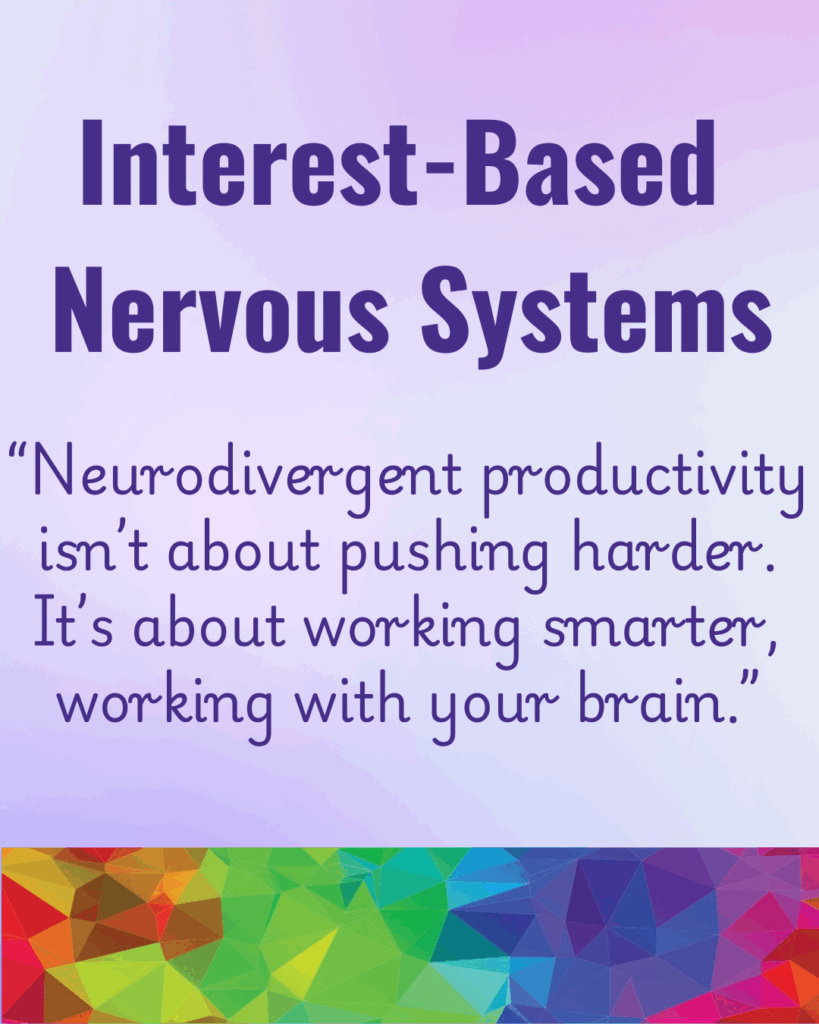
Have you ever sat down to do something you need to do and found yourself unable to start? No matter how urgent or how often you told yourself to “just do it,” the invisible wall wouldn’t budge. If so, you might be living with an interest-based nervous system, a common experience for many neurodivergent individuals, especially those with ADHD or autism.
Unlike the urgency-driven nervous system celebrated in hustle culture, an interest-based nervous system requires genuine curiosity, novelty, or emotional engagement to kick into gear. It’s not laziness or procrastination—it’s how your brain and body are wired.
What Is an Interest-Based Nervous System?
Urgency-driven cultures teach that deadlines and discipline drive results. But for many neurodivergent folks, interest—not urgency—is the true catalyst for action. In the episode, host Dr. Regina McMenomy explains:
“An interest-based nervous system is the opposite of urgency culture. Your interest in something has to be ignited to get you to take action—even if the task is mundane.”
This means productivity strategies built around to-do lists, time blocking, and grit often fall flat. Instead, tasks must be engaging, novel, or emotionally meaningful to spark movement.
The Myth of Laziness
It’s common for people with an interest-based nervous system to be mislabeled as lazy or unmotivated. But this framing overlooks a fundamental truth: motivation isn’t always a choice.
As Regina puts it:
“It’s not that I’m lazy—I can’t always choose what’s going to spark my interest.”
Neurodivergent people often internalize these messages, believing they’re broken because they can’t consistently complete low-interest tasks. But they’re not broken—they’re working against a system that wasn’t built for them.
Hyperfocus and Pressure Prompting
Deadlines can be both a blessing and a curse. For some, the looming pressure creates a jolt of dopamine that fuels intense bursts of productivity—a phenomenon known as hyperfocus. But hyperfocus isn’t a switch you can flip at will.
“You can’t control when hyperfocus happens. You just have to run with it when it shows up.”
This unpredictable workflow often leads to shame or burnout, especially when expectations don’t match reality.
Working With Your Brain, Not Against It
So, how do you get things done when your nervous system doesn’t respond to traditional methods? Regina shares one of her favorite workarounds: breaking down tasks into “must do,” “should do,” and “could do,” and using novelty to re-engage attention—like changing the format of her to-do list to make it feel fresh.
She even admits to tricking herself into action:
“Sometimes I create a persona in my head that tells me I can’t get something done—so I’ll do it just to prove them wrong.”
Self-awareness and creativity are powerful tools for navigating the peaks and valleys of interest-based motivation.
What It Means for Workplaces
Understanding how the interest-based nervous system functions is key to creating inclusive environments if you’re a manager or workplace leader. Rather than labeling employees as inconsistent or disorganized, ask:
- What parts of this task are engaging?
- Can I offer more autonomy or novelty?
- How can we create systems that honor different ways of working?
Supporting neurodivergent team members means expanding our definition of productivity—and recognizing that different nervous systems require different approaches.
Final Thoughts
The interest-based nervous system isn’t a weakness—it’s a different wiring. When we stop judging ourselves or others by neurotypical standards of urgency and output, we make space for creativity, innovation, and real belonging.
So next time your motivation vanishes, pause and ask: What would make this interesting? It might just be the question that gets you moving.

